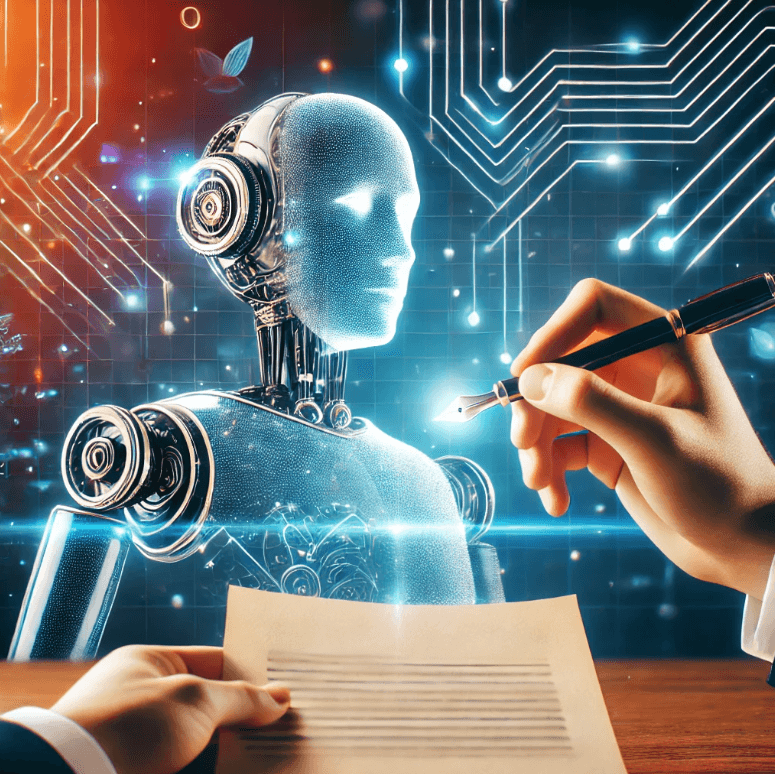The Pros and Cons of Using AI for Copywriting
The Rise of AI in Copywriting
As a digital marketing company, staying ahead of industry trends is essential. One of the hottest topics today is the use of artificial intelligence (AI) in copywriting. AI tools promise to streamline content creation, generate ideas quickly, and even optimize for SEO. But while the potential benefits are significant, there are important limitations to consider.
Let’s explore the pros and cons of using AI for copywriting and why human insight remains a critical part of the process.
The Benefits of AI in Copywriting
AI tools like ChatGPT and others have changed the way marketers approach content creation. Here are some key advantages:
1. Speed and Efficiency
AI can generate large volumes of text quickly, making it a useful tool for:
- Creating drafts for blog posts, product descriptions, or ad copy.
- Conducting keyword research or generating lists of relevant phrases.
For businesses with tight deadlines or high content demands, AI can be a time-saver.
2. Consistency and Scalability
AI excels at maintaining a consistent tone or style across content pieces. This is particularly valuable for:
- Large-scale campaigns requiring uniformity.
- Generating content for multiple platforms simultaneously.
3. Idea Generation
Struggling with writer’s block? AI tools can help:
- Provide alternative phrasing for headlines or CTAs.
- Suggest topics or angles based on industry trends.
AI acts as a brainstorming partner, offering a fresh perspective to kickstart the creative process.
The Drawbacks of AI in Copywriting
While AI offers significant benefits, it also has limitations that make human involvement essential.
1. Lack of Deep Understanding
AI lacks the ability to truly understand:
- Your Brand Voice: AI may struggle to replicate the nuances of your unique tone.
- Your Target Audience: AI-generated content may lack empathy or cultural context.
2. Generic Content
AI creates text based on patterns and data it has been trained on, which can result in:
- Repetitive or formulaic phrasing.
- A lack of originality that may fail to stand out.
3. Quality Control
AI-generated content requires human oversight to ensure:
- Correct grammar, context, and relevance.
- Compliance with brand guidelines and industry standards.
AI Copy vs. Human Copy: Key Differences
Here’s how AI copy and human copy compare:
| AI Copy | Human Copy |
|---|---|
| Generated based on algorithms and language patterns. | Created with personal insight, creativity, and intent. |
| Fast and consistent but often lacks nuance. | Tailored to specific audiences with emotional depth. |
| Requires human editing for quality and accuracy. | Generally higher quality but takes more time. |
AI tools like OpenAI’s ChatGPT are incredibly powerful, but they operate based on patterns, not purpose. Humans bring context, creativity, and strategic thinking that AI cannot replicate.
Finding the Right Balance

The key to successful AI copywriting lies in balance. Here’s how to integrate AI into your workflow effectively:
1. Start and End with Humans
AI works best as a supplement, not a replacement. As Bruce Clay, the first personto coin the acronym SEO, who aptly stated:
“You need Human – AI – AI – AI – and then Human.”
Humans should:
- Set the strategic vision.
- Refine AI-generated content for quality and relevance.
2. Use AI for Routine Tasks
Leverage AI for:
- Generating drafts or initial ideas.
- Repetitive content like meta descriptions or product lists.
3. Apply Human Insight for Creativity
Rely on human writers to:
- Develop emotional, story-driven content.
- Build brand-specific messaging.
When to Use AI in Copywriting
AI is an excellent tool for:
- Businesses with tight deadlines or limited resources.
- Tasks requiring high scalability, like e-commerce product descriptions.
However, for high-stakes content (e.g., brand messaging, thought leadership), human expertise is irreplaceable.
Final Thoughts
AI is a game-changer in copywriting, offering speed, efficiency, and scalability. But while it’s a powerful tool, it’s not a complete solution. The human element—strategy, creativity, and empathy—remains critical to creating impactful, authentic content.
By combining the strengths of AI and human expertise, businesses can achieve the perfect balance: efficiency without sacrificing quality. At Rise Local, we believe in harnessing the best of both worlds to help our clients succeed.
What’s your take on AI in copywriting? Contact us today to explore how our team combines cutting-edge tools with human insight to craft compelling content that connects.
